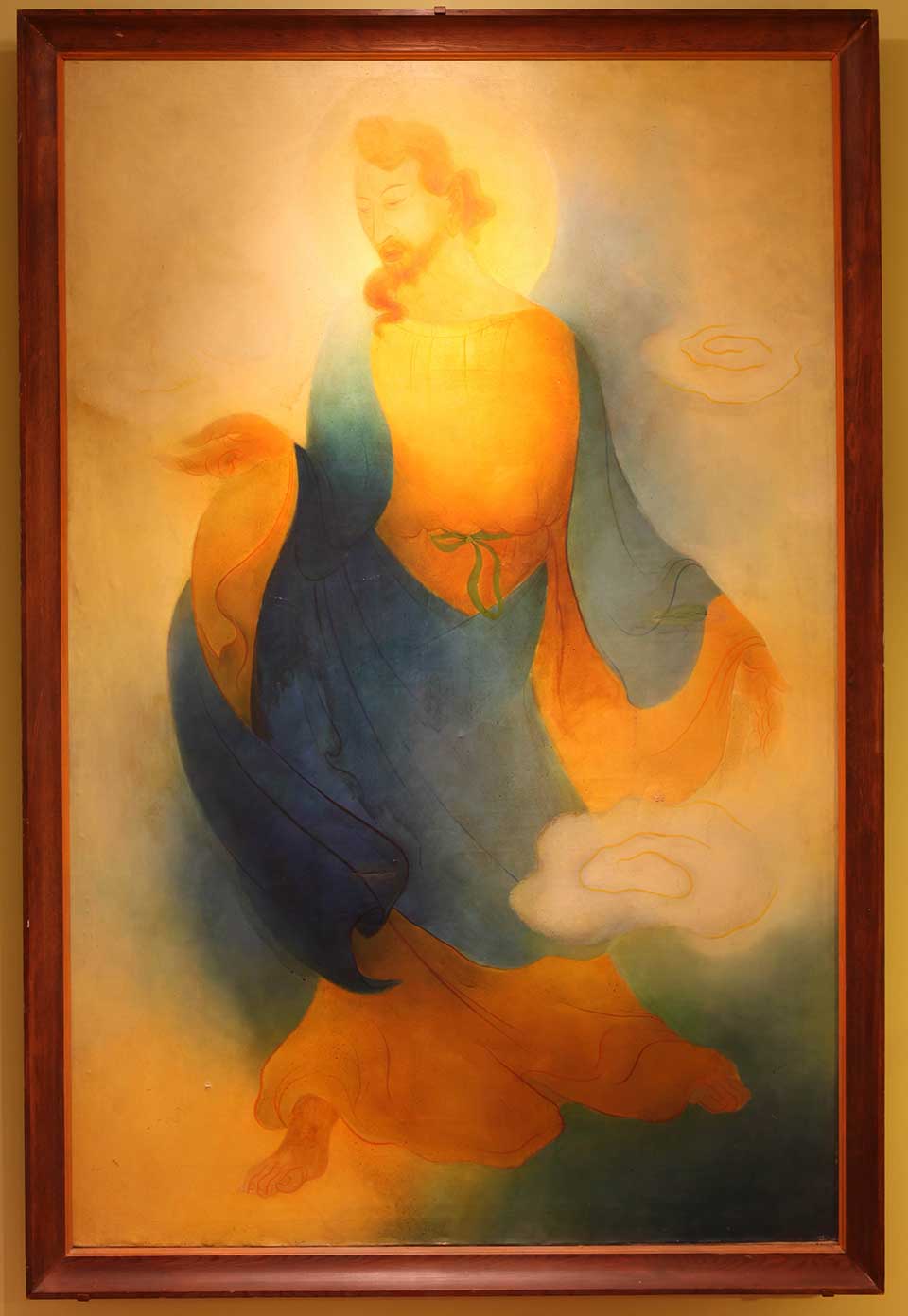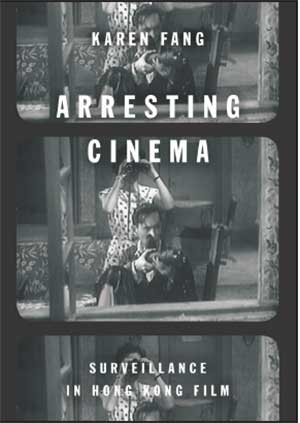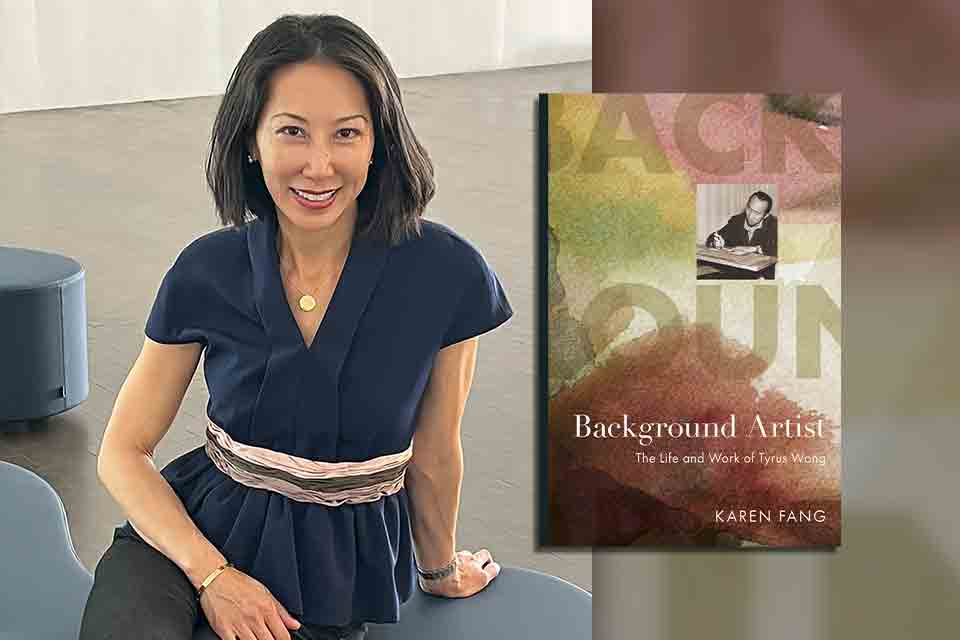Tyrus Wong’s Visionary Bicultural Aesthetic: A Dialog with Karen Fang, by Susan Blumberg-Kason

Karen Fang is professor of English on the College of Houston and writer of the brand new e-book Background Artist: The Life and World of Tyrus Wong (Rutgers College Press, 2025), which is a biography of the Chinese language immigrant artist, centenarian, and Disney legend who helped make Bambi. Background Artist lately acquired an honorable point out for the Chinese language American Librarians Affiliation’s Greatest E-book Award within the grownup nonfiction class. A movie scholar and founding father of the Media and Transferring Picture Initiative on the College of Houston, Fang additionally wrote Arresting Cinema: Surveillance in Hong Kong Movie (Stanford College Press, 2017). I lately interviewed her by way of electronic mail about her new e-book, the golden age of Hollywood, and the place she finds inspiration for her books.
Susan Blumberg-Kason: I’ve so many questions however will start with Tyrus Wong as a result of your most up-to-date e-book is a biography of his unbelievable life. Are you able to discuss a little bit about whenever you first heard of him and the way you determined to write down his biography?
Karen Fang: Like many individuals, I used to be captivated by the in depth protection of Tyrus when he handed in 2016 on the outstanding age of 106. A documentary about him had simply come out the yr earlier than, and his passing in late 2016 (simply after the primary Trump election) got here at a time of heightened anti-Asian, anti-immigrant rhetoric. I used to be fascinated by this Chinese language immigrant who couldn’t even turn into a citizen on the time he helped make Bambi. As soon as I realized extra about his profession, which included effective artwork, practically three a long time at Warner Bros., and fame as a best-selling greeting-card artist, I knew we wanted a full-length e-book about this outstanding man.
I used to be fascinated by this Chinese language immigrant who couldn’t even turn into a citizen on the time he helped make Bambi.
Blumberg-Kason: Tyrus arrived within the US from southern China at a time when the US authorities banned Asian and different ethnic Asian immigrants from coming to America. Like many Chinese language immigrants, Tyrus turned a “paper son” in 1920, taking up an id that was not his personal. Paper sons had turn into quite common after the 1906 San Francisco earthquake, when a lot of the immigration documentation was misplaced. Once you have been writing Background Artist, did you ever suppose Tyrus’s story would appear so well timed given the state of in the present day’s US immigration insurance policies?
Fang: Sure, already on the time of Tyrus’s loss of life in 2016, the difficulty of immigration and America’s ambivalence concerning ethnic Chinese language and Asian residents was already in excessive reduction, besides it was surprising to see this lengthy, unhappy historical past proceed. In 2018, after I was simply beginning analysis on Tyrus, US border coverage resumed a family-separation observe used greater than a century earlier, when Tyus arrived in America as a ten-year-old boy. A lot of my analysis and writing for Background Artist occurred in the course of the pandemic, when anti-Asian feeling was widespread. Right this moment, federal funding cuts and coverage adjustments are drastically impacting each the variety of immigrants who can enter the US and the capability of colleges and universities to coach People in regards to the necessary function immigration has all the time performed in our nationwide historical past.
I discover all this disheartening, however I’m sustained by the unbelievable instance of Tyrus himself. Regardless of enduring horrible circumstances, he left his mark all through American visible heritage. Tyrus’s capability to transcend hardship by means of creativity is endlessly inspiring.
Tyrus’s capability to transcend hardship by means of creativity is endlessly inspiring.
Blumberg-Kason: I beloved studying about Tyrus not solely due to his creative accomplishments but in addition as a result of his story is so American. Tyrus’s work could also be most seen in Bambi, however he was additionally very concerned in different types of industrial artwork and within the New Deal, particularly the Works Progress Administration’s Federal Artwork Venture. Are you able to discuss a little bit about how he got here to work within the Federal Artwork Venture and what you contemplate to be his most profitable tasks at the moment?
Fang: The Federal Artwork Venture (FAP) was the effective arts wing of President Roosevelt’s Melancholy-era financial revitalization program. The FAP enriched American tradition by using needy artists to create effective artwork works for the advantage of Americans, similar to murals in faculties and authorities buildings, or work and effective artwork prints that may very well be loaned to native communities. When Tyrus joined the FAP in 1936, he had already developed a popularity for his Chinese language-style brushwork. At an FAP exhibit in a public library, considered one of Tyrus’s work received a vote because the neighborhood’s favourite piece!
So many work and prints have been produced in the course of the FAP that though many have been misplaced over the a long time, it isn’t unusual for works to immediately floor. I lately heard from a museum in Bellingham, Washington, a college city not removed from the Canadian border, which has a Tyrus FAP print of their assortment. For me this was significantly significant, as I used to be born in Bellingham, the place my Taiwanese immigrant dad and mom first settled. However it is usually typical of the FAP legacy, which introduced effective artwork to cities all through the nation. It’s additionally significantly indicative of the variety of artists within the western states, whose place on the Pacific coast meant that the FAP included a lot of ethnic Asian artists.
Blumberg-Kason: As you talked about earlier, Tyrus lived to the distinguished age of 106! After we have been on a biographers’ panel collectively final yr, we spoke about contacting and befriending the households of our biography topics. That is maybe the scariest and most rewarding a part of writing biography. What have been your largest surprises whenever you reached out to Tyrus’s household? And do you suppose it’s doable to write down a biography with out contacting the household?
Fang: Tyrus’s life is so inspiring and he was himself such a likable man that I knew his biography could be freed from the issues going through different writers, who would possibly must share content material or characterizations to which the household objects. Nonetheless, like many biographers, I encountered situations when documentation differed from folks’s reminiscences. Additionally, as a result of artwork is essentially subjective, there have been inevitable moments when my description or interpretation of Tyrus’s work diversified from that of his household and shut associates. At these moments I needed to depend on my place as a scholar whose dedication is in the beginning to the analysis.
There are numerous historic topics and figures which may require a biographer to proceed with out household cooperation, however Tyrus was not considered one of them, luckily. Certainly, one of many nice pleasures of researching his life and profession was the unbelievable neighborhood of creatives to which he belonged and whom he impressed. Tyrus handed earlier than I may meet him, however I met many artists, animators, writers, and filmmakers whose present observe helped me perceive his persona and legacy.

Blumberg-Kason: This can be an unimaginable query to reply, however in the event you may choose three items of Tyrus’s work that you just love probably the most, which might they be?
Fang: Bambi is so iconic that it could eternally be the factor for which he’s most famed, however I believe his effective artwork work Self Portrait (ca. 1932) and Chinese language Jesus (1936) will quickly turn into components of the canon of American artwork historical past. Made across the time he graduated from artwork college, Tyrus’s delicate watercolor Self Portrait portrays himself with a bamboo paintbrush in hand. The work resembles conventional Chinese language portray—but in addition exhibits Tyrus carrying suspenders and fashionable Western pants and shirt, exemplifying the fusion of Japanese and Western aesthetics for which the artist was already gaining vital consideration.

Equally, the monumental spiritual portray now often known as Chinese language Jesus illustrates Tyrus’s visionary bicultural aesthetic on a good grander scale. The vividly hued oil portray, which is over six ft tall, was commissioned by a Chinese language American church and embodies an artist and congregation equally snug in each Japanese and Western tradition. The complete-length Christ portrait exhibits a begowned Jesus with halo, crimson hair, and almond eyes. The deity floats within the heavens and holds his palms out in supplication, however the stylized cloud at his ft and the drape of his hand are extra paying homage to Buddha than conventional Christian imagery. A portray of this dimension and topic could be a serious accomplishment for any artist, however Chinese language Jesus is particularly necessary for its audacious fusion of Western and Chinese language tradition. Many years earlier than “Black Santa” and present questions on “What did Jesus actually appear like?” Tyrus made this unforgettable masterpiece of bicultural imaginative and prescient and elegance.
Chinese language Jesus is particularly necessary for its audacious fusion of Western and Chinese language tradition.
Blumberg-Kason: I first turned acquainted along with your work after I reviewed your 2017 e-book, Arresting Cinema: Surveillance in Hong Kong Movie. I spent a lot of the Nineteen Nineties in Hong Kong and felt such as you have been chatting with me in your pages! I had by no means considered surveillance in movie and particularly not in Hong Kong motion pictures, which I had assumed have been retailers of leisure—and fabulous ones at that—for a metropolis that by no means slowed down. Are you able to talk about the way you first turned inquisitive about that matter?
 Fang: My first go to to Hong Kong was additionally within the mid-Nineteen Nineties, and I used to be struck by the ubiquity of surveillance practices all through the town. At the moment, London was typically stated to be the world’s “most surveilled metropolis” as a result of fast unfold of CCTV monitoring, however Hong Kong gave the impression to be simply as rife with CCTV cameras in addition to non-public safety at even modest residences and companies, and it was widespread for anybody within the metropolis to be requested to supply identification at any time. With Hong Kong’s standing as a British colony then about to revert to Chinese language communist management, what have been the financial, political, cultural, and historic causes for this unparalleled surveillance tradition?
Fang: My first go to to Hong Kong was additionally within the mid-Nineteen Nineties, and I used to be struck by the ubiquity of surveillance practices all through the town. At the moment, London was typically stated to be the world’s “most surveilled metropolis” as a result of fast unfold of CCTV monitoring, however Hong Kong gave the impression to be simply as rife with CCTV cameras in addition to non-public safety at even modest residences and companies, and it was widespread for anybody within the metropolis to be requested to supply identification at any time. With Hong Kong’s standing as a British colony then about to revert to Chinese language communist management, what have been the financial, political, cultural, and historic causes for this unparalleled surveillance tradition?
Cinema is a good way to discover surveillance, each as window onto society and since surveillance is a key theme in a few of the most necessary movies of Western tradition. Consider Hitchcock’s Rear Window, Vertov’s Man with a Film Digicam, Chaplin’s Trendy Occasions, and Coppola’s The Dialog. Hong Kong movie has lengthy been one of many world’s nice cinemas, and its frequent depictions of surveillance are each a glimpse into the territory’s distinctive surveillance tradition and a symptom of the movie trade’s world aspirations. Even in the present day, as Hong Kong and Hong Kong cinema each look so totally different from the time you and I bear in mind, I’m fascinated by movie’s capability to precise cultural id and discover the chances of various futures.
Blumberg-Kason: I simply regarded again at our emails and see that we began corresponding 5 years after Arresting Cinema got here out. You reached out to see if I had come throughout the Hollywood costume designer Dorothy Jeakins in my analysis of the Shanghai and Hollywood salon host Bernardine Szold Fritz. You write about Dorothy in Background Artist as a result of she went to artwork college with Tyrus. And now you’re engaged on a biography of Dorothy. I believe biographers have these “eureka!” moments once we can’t cease desirous about somebody and realize it received’t finish till we analysis and write their tales. Do you bear in mind whenever you knew you needed to write about Dorothy?
Fang: Three-time Oscar-winning costume designer Dorothy Jeakins is so well-known in Hollywood movie historical past that I already acknowledged her identify after I began researching Tyrus. She received an Oscar for her very first work as costume designer, on Ingrid Bergman’s 1948 Joan of Arc, and likewise did the costumes for The Sound of Music. My eureka second with Dorothy was after I began diving into her private archive as a part of my Tyrus analysis. Whereas I already knew about her movie work, I didn’t know she had managed to attain all that as a single mother of two boys. Like her artwork college pal Tyrus, Dorothy is a narrative of artistic success in opposition to formidable odds.
Blumberg-Kason: Lastly, moreover being a gripping and necessary American story, Background Artist can also be a bodily stunning e-book. It’s a hardcover with 100 black-and-white and colour photographs and pictures from Tyrus’s artwork and life. What recommendation do it’s important to aspiring biographers who hope to point out their topics in probably the most gorgeous mild? Did you have got any issues getting your writer to incorporate all these fabulous photos?
Fang: It’s simple to seek out good illustrations when your biographical topic is an artist! With a prolific artist like Tyrus, the problem was selecting which objects to breed. In his greeting playing cards alone, there are over 5 hundred distinctive revealed designs! Artwork copy additionally entails sophisticated copyright, license, and mental property points. We’re fortunate in the present day that improved printing expertise makes high-quality illustration more and more reasonably priced, so in Background Artist we selected to make use of each in-line illustrations (matte photos printed instantly on the identical web page because the textual content) in addition to a standard insert of shiny plates. We did this as a result of I needed to point out the continuity of Tyrus’s creative imaginative and prescient, whilst he moved forwards and backwards between effective and industrial artwork. In a refined however highly effective manner, I hope readers choose up on the flexibility of this sensible and distinctive artist.
Blumberg-Kason: Thanks once more a lot for chatting about your work. I can’t wait to learn extra from you about Dorothy Jeakins!

0 Comment